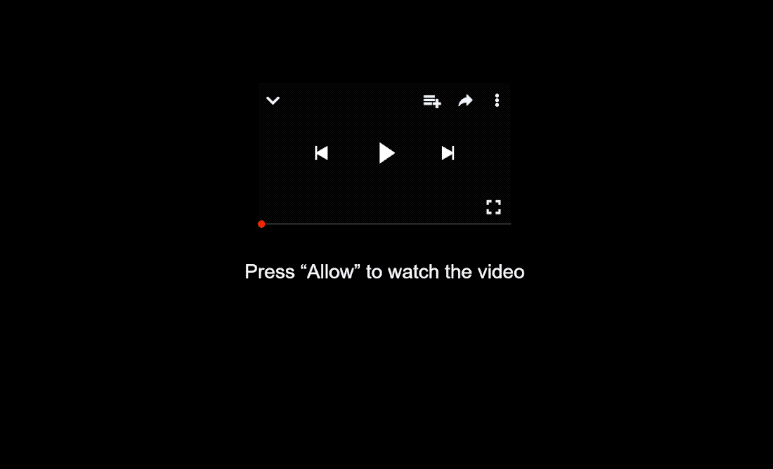Remove tryrichleads.top pop-ups
tryrichleads.top is a highly questionable website whose sole purpose is to trick users into allowing ads on the desktop. When you get redirected to the site, you’ll immediately get a browser alert saying “tryrichleads.top wants to show notifications”. If you click “Allow”, you will authorize the website to spam ads directly on your desktop. It’s worth mentioning that the ads will not only be annoying but also potentially expose you to dangerous content, such as malware and scams. Fortunately, even if you have given the site permission, it’s not difficult to revoke it.
Websites like tryrichleads.top exploit a legitimate browser feature that allows sites to send notifications to users’ desktops. While notifications from trustworthy sites can be helpful, tryrichleads.top is a scam, which makes allowing its notifications unsafe. Engaging with the ads from this site could expose you to harmful content, including prompts to download suspicious software or participate in fake giveaways. If you’ve enabled notifications from this site, it’s important to avoid interacting with those ads and revoke the permission immediately. Instructions on how to do this will be provided at the end.
Despite its frequent misuse, the notification feature can be useful. For instance, allowing a reputable news site to send notifications can keep you updated with news alerts directly on your desktop. You can revoke this permission at any time if you wish.
We also suggest running a scan with an anti-virus software like WiperSoft to check for adware that may be causing issues. If adware is detected, WiperSoft can remove it.
Adware may be the reason for the redirects
There are typically two reasons you might find yourself redirected to random websites: either your computer is infected with adware or a similar type of malware, or you’ve been visiting high-risk sites and clicking on links that prompt these redirects. Most of the time, the latter is the culprit. To help avoid these random redirects while browsing, installing an adblocker can be quite effective.
However, if you experience unexpected redirects while visiting safe websites, it’s possible that adware has been installed on your computer. This type of infection is generally harmless but primarily exposes users to ads. Adware often comes bundled with free programs, meaning it can be installed as an added offer alongside the main program. Many free applications include these offers, and they are usually set to install automatically. To prevent unwanted software from being installed, you need to pay attention when installing free programs. Opt for Advanced or Custom settings instead of Default settings. This way, you’ll be able to see all additional offers and can choose to deselect them. While some of these offers might seem beneficial at first glance, allowing their installation can lead to unnecessary junk on your computer, making it harder to remove them later on.
Remove tryrichleads.top pop-up ads
If you have enabled notifications from this website, it’s best to revoke that permission as soon as possible. Fortunately, the process is quite straightforward. If you’re unsure how to go about it, you can follow the instructions provided below. Make sure to remove tryrichleads.top from the list of sites with permissions, along with any other unfamiliar sites.
- For Mozilla Firefox: Open menu (the three bars top-right corner) -> Options -> Privacy & Security. Scroll down to Permissions, press on Settings next to Notifications, and remove tryrichleads.top and any other questionable websites. You can permanently turn off these notification requests by checking the “Block new requests asking to allow notifications” box in the same Notifications settings.
- For Google Chrome: Open menu (the three dots top-right corner) -> Settings -> Privacy and security -> Site Settings. Click on Notifications under Permissions, and remove tryrichleads.top and any other questionable websites. You can stop these notification requests permanently by toggling off “Sites can ask to send notifications”.
- For Microsoft Edge: Open menu (the three dots top-right corner) -> Settings -> Cookies and site permissions -> Notifications. Review which sites have permission and remove tryrichleads.top and any other questionable websites. You can permanently turn off these notification requests by toggling off “Ask before sending”.
To determine if adware is causing your redirects, scan your computer using WiperSoft or another anti-virus program. If adware is the culprit, removing it will stop the redirects. If it’s not adware, consider installing an adblocker to block ads and redirects.
Site Disclaimer
WiperSoft.com is not sponsored, affiliated, linked to or owned by malware developers or distributors that are referred to in this article. The article does NOT endorse or promote malicious programs. The intention behind it is to present useful information that will help users to detect and eliminate malware from their computer by using WiperSoft and/or the manual removal guide.
The article should only be used for educational purposes. If you follow the instructions provided in the article, you agree to be bound by this disclaimer. We do not guarantee that the article will aid you in completely removing the malware from your PC. Malicious programs are constantly developing, which is why it is not always easy or possible to clean the computer by using only the manual removal guide.

